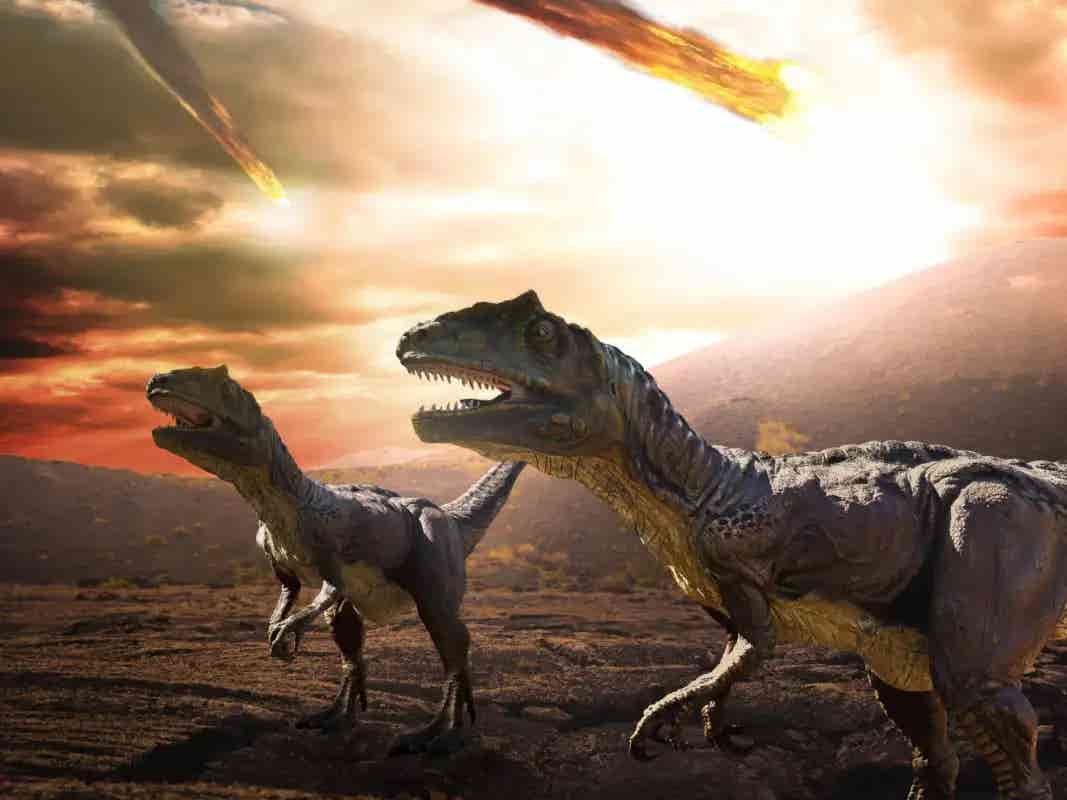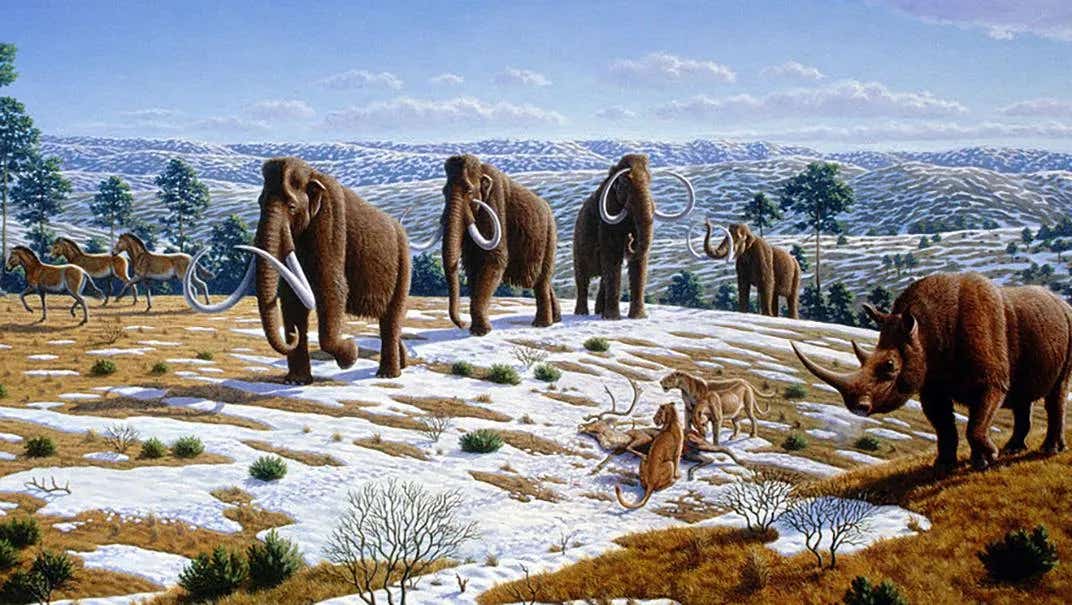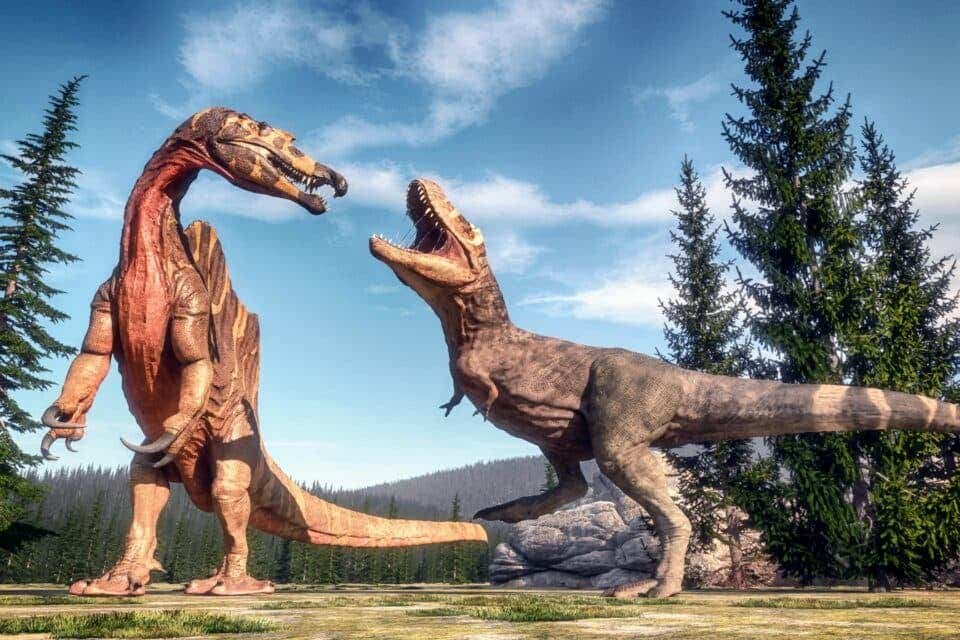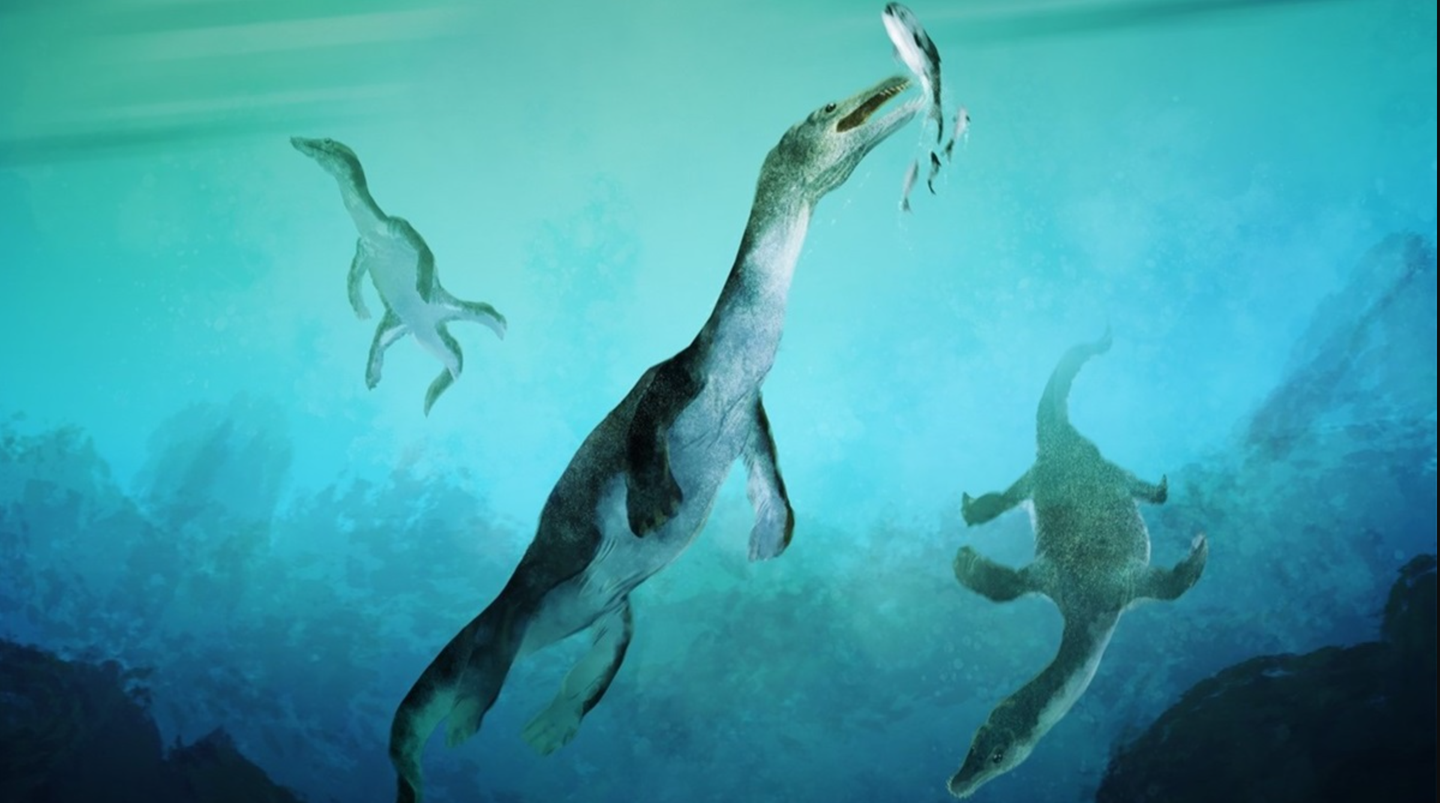Groundbreaking new evidence finally ends the debate on what killed the dinosaurs
Scientists have long debated what caused the dinosaurs to die out 66 million years ago. Was it a huge asteroid or volcanic eruptions?

This novel computational method not only provides a fresh perspective on the age-old dinosaur extinction debate but also promises exciting possibilities for understanding other enigmatic events in Earth’s history. (CREDIT: Creative Commons)
For a long time, scientists have debated what caused the dinosaurs to die out 66 million years ago. Was it a huge asteroid or volcanic eruptions? Dartmouth researchers have approached this question differently by using powerful computers to find the answer without human bias.
Their study, published in the respected journal, Science, introduces a new modeling method that uses 130 connected computers. These computers analyzed massive amounts of geological and climate data to trace back events that led to the extinction of the dinosaurs.
Alex Cox, the lead author of the study and a graduate student in Earth Sciences at Dartmouth, explained, "Most models predict the future. We modified a carbon-cycle model to work backward, using the results to find the cause… our model shows us how we ended up with the geological record we have."
The innovative model used machine learning to examine over 300,000 scenarios. It looked at factors like carbon dioxide emissions, sulfur dioxide output, and biological activity over a million years surrounding the extinction event.
Through Markov Chain Monte Carlo, a type of machine learning analogous to smartphone text predictions, these processors converged on a plausible scenario consistent with the fossil record.
The K–Pg extinction, demarcated by the geological periods surrounding the catastrophic event, witnessed global die-offs as food webs crumbled under the erratic climate. This atmosphere, filled with sun-obscuring sulfur, heat-retaining carbon dioxide, and airborne minerals, fluctuated from freezing to searing temperatures.
Did asteroids or volcanoes kill off the dinosaurs?
Historically, volcanic eruptions were the primary suspects until the discovery of the Chicxulub impact crater in Mexico. This crater, resulting from a colossal asteroid, has been a strong contender for the extinction's main cause. However, some hypotheses propose a dual cataclysmic cause: the asteroid's collision with Earth already destabilized by volcanic eruptions from the Deccan Traps in western India.
Related Stories
Brenhin Keller, Dartmouth's Earth Sciences assistant professor and co-author, along with Cox, sought to "see what you would get if you let the code decide." Their revelations? The gases emitted by the Deccan Traps could've alone instigated the global extinction.
The Deccan Traps spewed an estimated 10.4 trillion tons of carbon dioxide and 9.3 trillion tons of sulfur over nearly a million years, with eruptions commencing about 300,000 years prior to the asteroid impact.
Keller, who has previously linked four of Earth's five mass extinctions to volcanic activities, remarked, "This is the first independent estimation of volatile emissions... consistent with emissions from the Deccan Traps."
While the model exposed a sharp decline in organic carbon in the ocean around the Chicxulub impact, suggesting significant species loss, it discerned no dramatic uptick in carbon or sulfur dioxide emissions at the time. This implies the asteroid's role in the extinction might not be as reliant on gas emissions as previously theorized.
Drawing parallels, Cox highlighted that from 2000 to 2023, burning fossil fuels has injected approximately 16 billion tons of carbon dioxide into the atmosphere annually. While concerning, it would take thousands of years to rival the emissions from the Deccan Traps.
Cox, on the model's accuracy, stated, "Most heartening is that the results we achieved are broadly physically plausible."
Innovation and Beyond
By integrating processors, the data analysis duration shrunk dramatically, from potentially years to mere hours. This pioneering technique, according to Cox, is primed to reverse engineer other earth systems models, evaluating known geological outcomes to discern leading factors.
"This type of parallel inversion hasn't been done in earth sciences models before. Our method can be scaled up… it's quite resistant to human bias," Cox added. He humorously noted that peers seemed more captivated by the novel methodology than the research's actual findings.
In wrapping up, it appears that this novel computational method not only provides a fresh perspective on the age-old dinosaur extinction debate but also promises exciting possibilities for understanding other enigmatic events in Earth's history.
Earth's five mass extinctions
Earth's five mass extinctions are major events in history where large percentages of species were wiped out due to various environmental catastrophes:
Ordovician-Silurian Extinction (about 443 million years ago): Around 85% of species went extinct, likely due to a combination of a drop in sea levels and glaciation, followed by rising sea levels from melting ice.
Late Devonian Extinction (about 375-359 million years ago): This extinction happened over a long period and may have been caused by widespread oxygen depletion in oceans. Around 75% of species, particularly marine life, were lost.
Permian-Triassic Extinction (about 252 million years ago): Known as "The Great Dying," it was the most severe extinction, wiping out around 96% of marine species and 70% of terrestrial species. Possible causes include volcanic activity, climate change, and ocean anoxia.
Triassic-Jurassic Extinction (about 201 million years ago): This extinction event saw around 80% of species disappear, possibly due to massive volcanic eruptions and climate change, paving the way for dinosaurs to dominate the Earth.
Cretaceous-Paleogene Extinction (about 66 million years ago): Known for ending the reign of the dinosaurs, this extinction was likely caused by an asteroid impact, volcanic activity, and climate changes, leading to the extinction of about 75% of species.
Each of these extinctions reshaped life on Earth, allowing new species to evolve and thrive.
Note: Materials provided above by The Brighter Side of News. Content may be edited for style and length.
Like these kind of feel good stories? Get the Brighter Side of News' newsletter.
Joseph Shavit
Head Science News Writer | Communicating Innovation & Discovery
Based in Los Angeles, Joseph Shavit is an accomplished science journalist, head science news writer and co-founder at The Brighter Side of News, where he translates cutting-edge discoveries into compelling stories for a broad audience. With a strong background spanning science, business, product management, media leadership, and entrepreneurship, Joseph brings a unique perspective to science communication. His expertise allows him to uncover the intersection of technological advancements and market potential, shedding light on how groundbreaking research evolves into transformative products and industries.



